Abstract
Two pigeons were trained to peck whichever of eight keys displayed a white field (SD). The other seven keys displayed a white "X" on a black background (S delta). Each peck to SD produced three-second access to grain, a three-second intertrial interval (ITI), and the next trial. Pecks to S delta produced a three-second timeout (TO) and the same trial. During later sessions the key displaying SD changed every t seconds (t = 3, 2, 1, .5, and .25 sec), requiring the birds to track the position of the SD. Pecks on a ninth key increased t. Several sessions employed novel stimuli to ascertain the controlling stimulus dimensions. Both birds made few errors acquiring the original discrimination. During the tracking sessions, both birds made few errors when t = .5 sec. Only one reliably lengthened t. Data from sessions with novel stimuli indicate that color and form were important aspects of SD and S delta respectively; movement contributed to the final performance.
Full text
PDF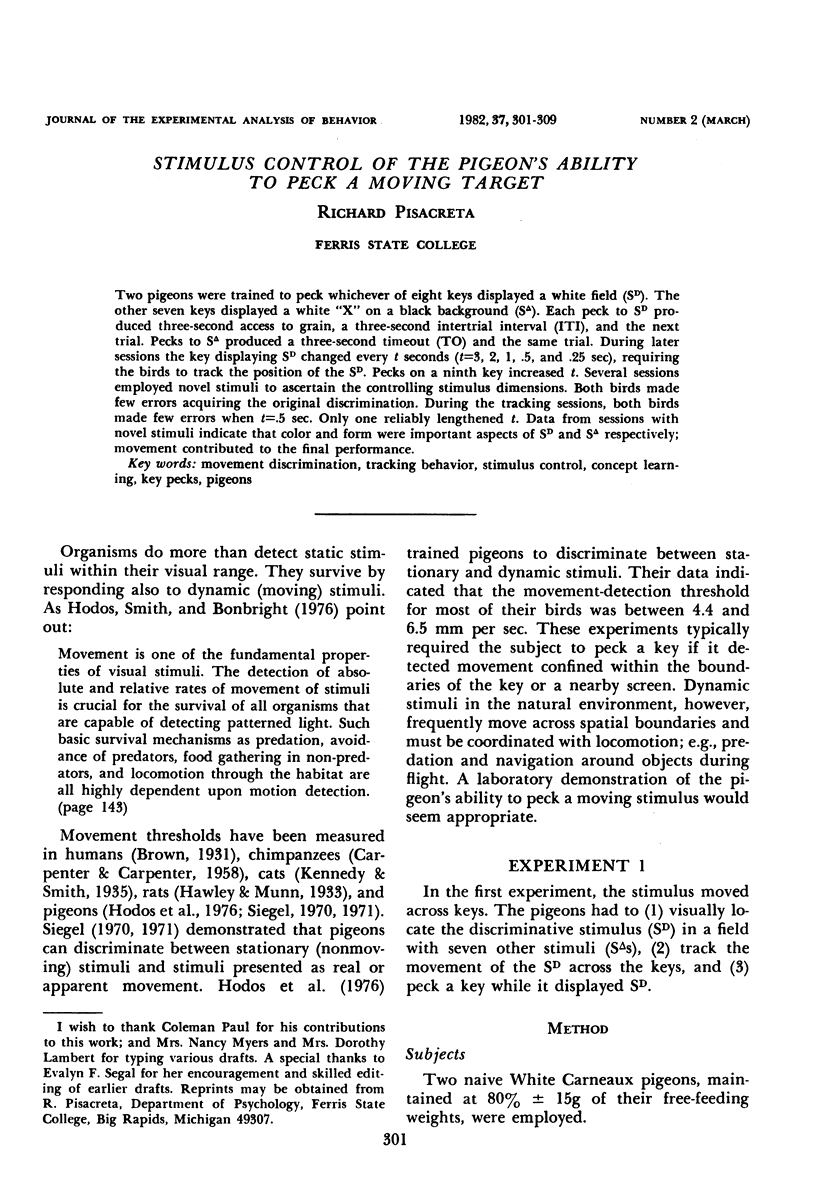
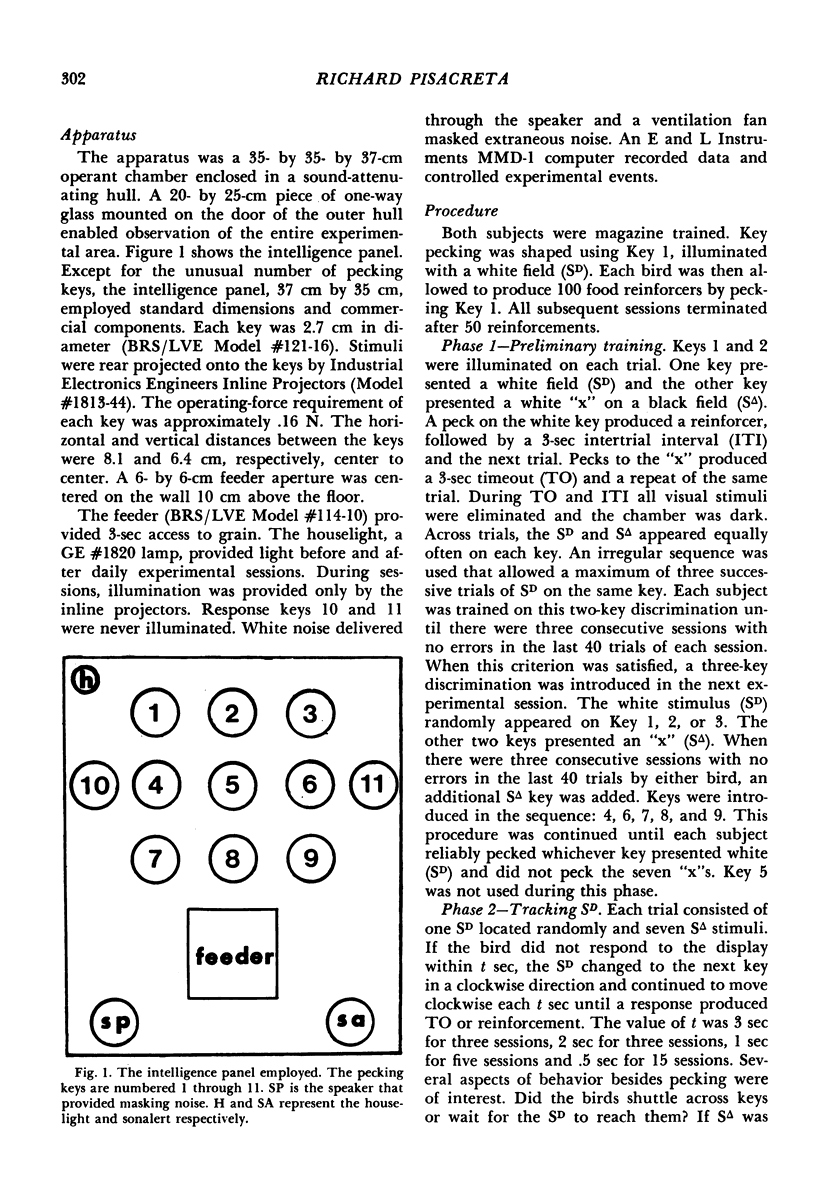
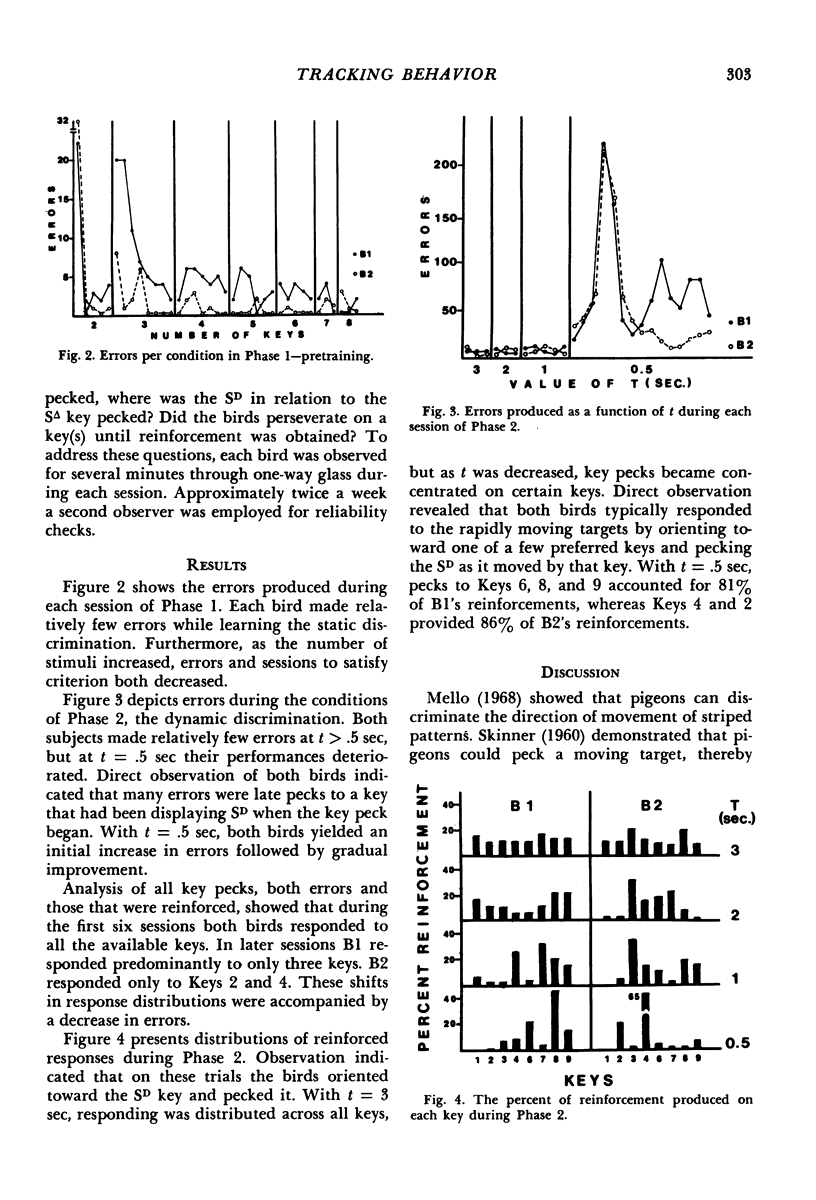
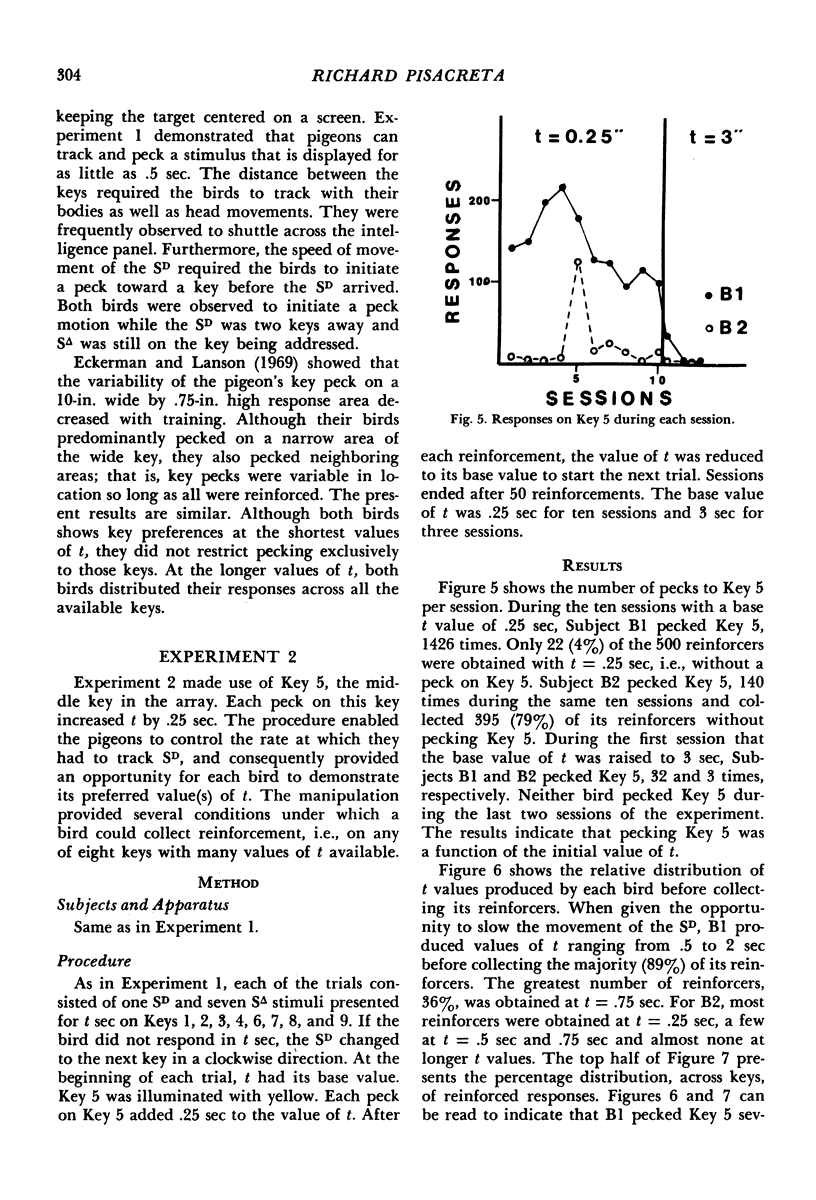
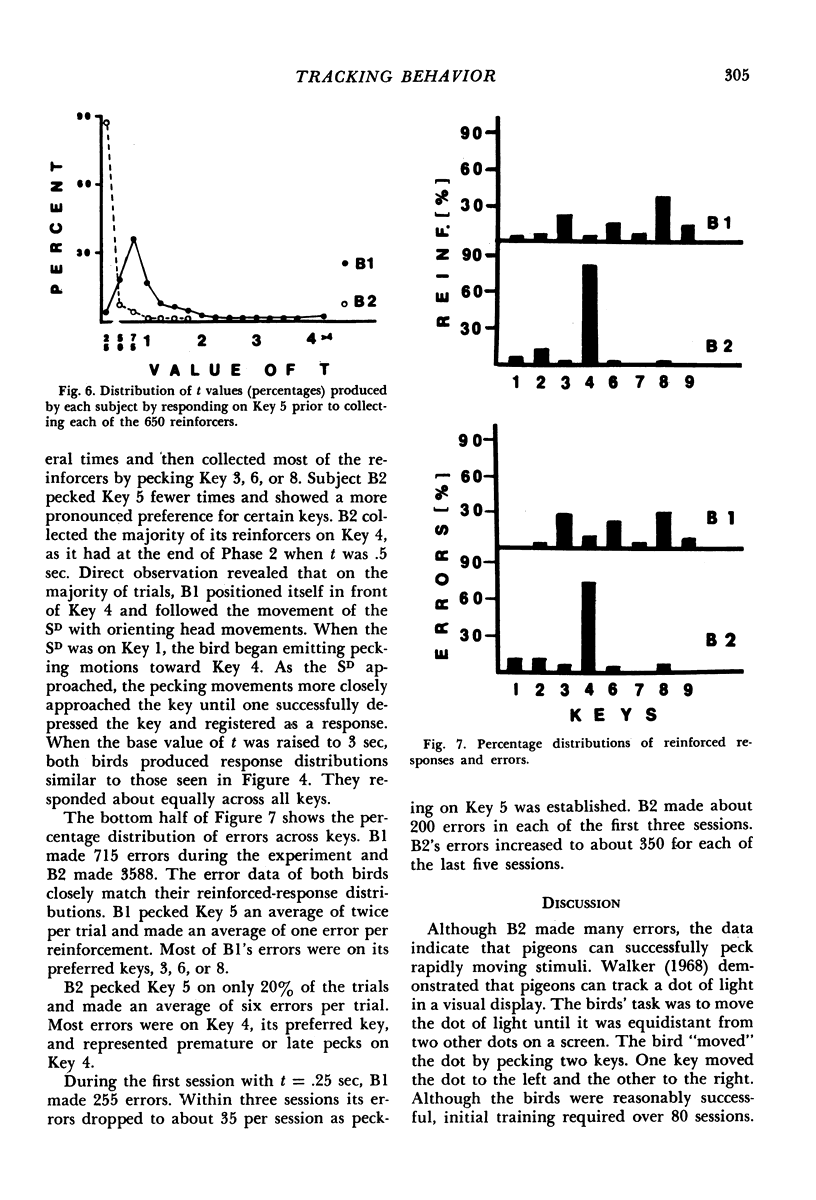
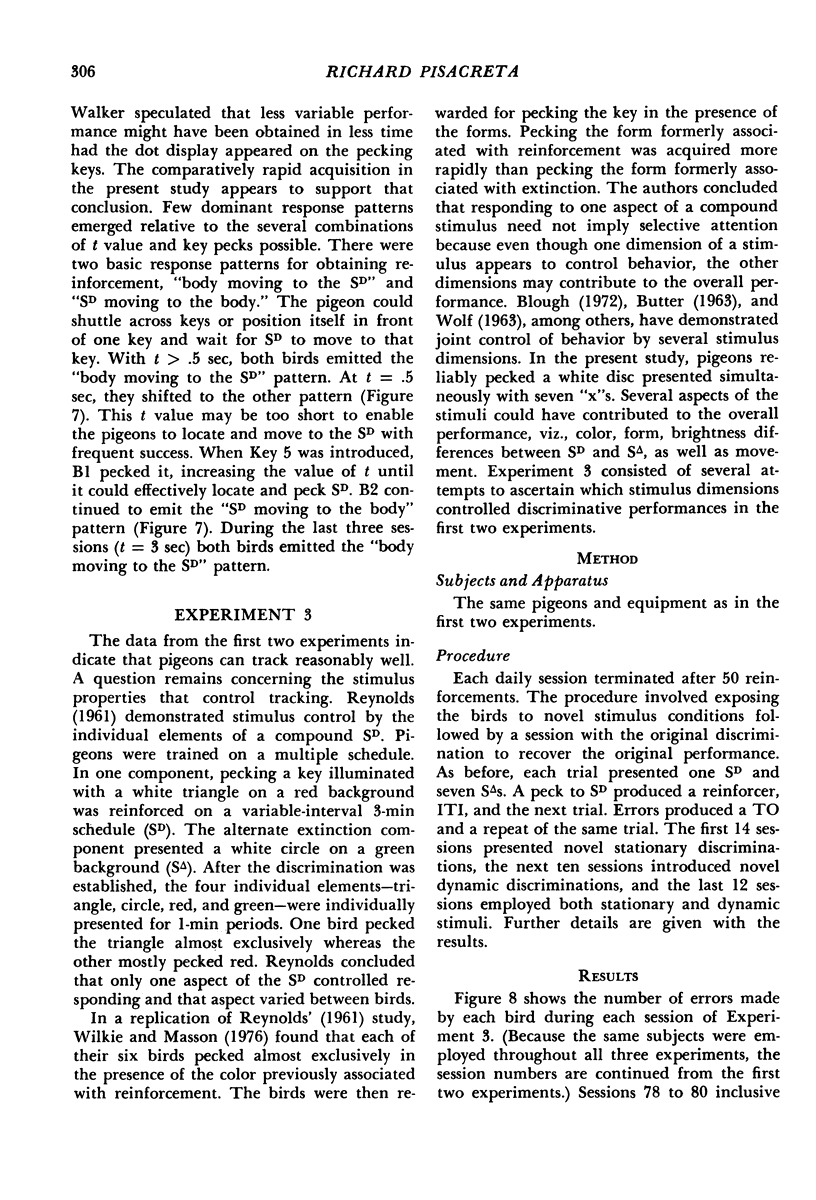
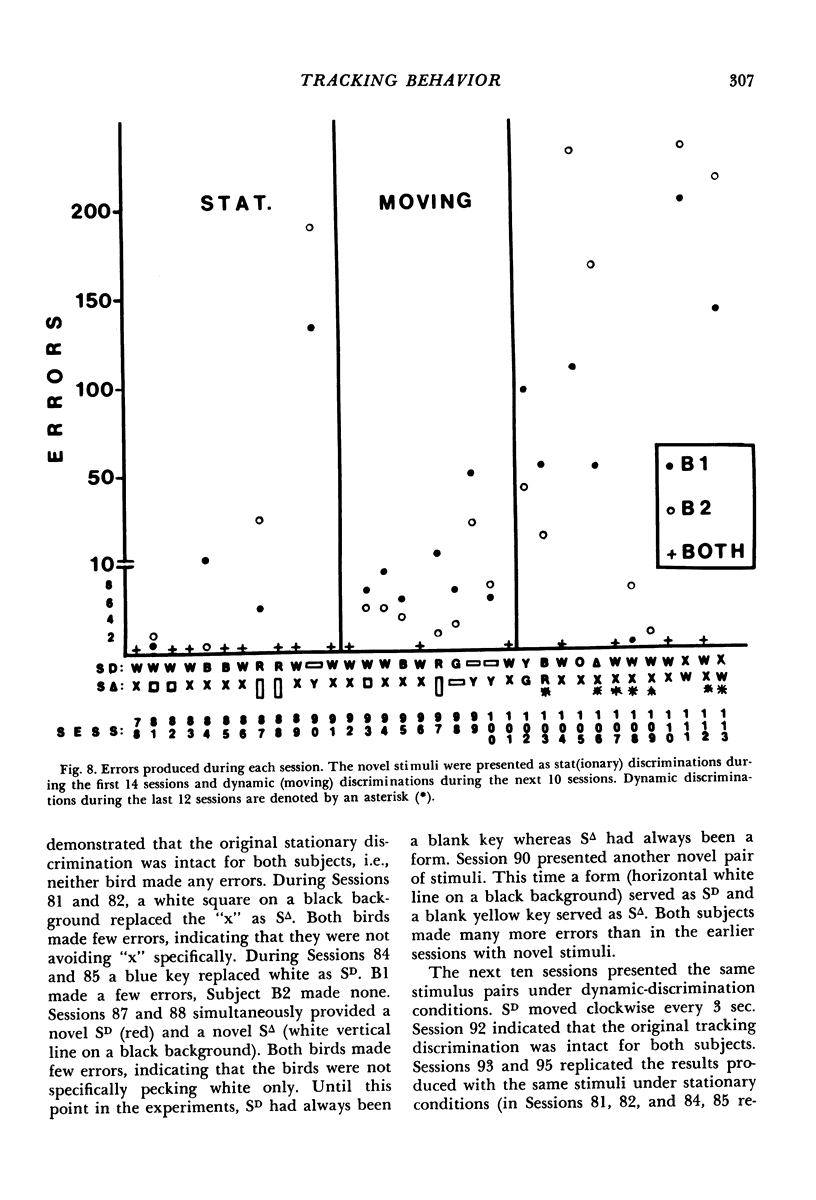
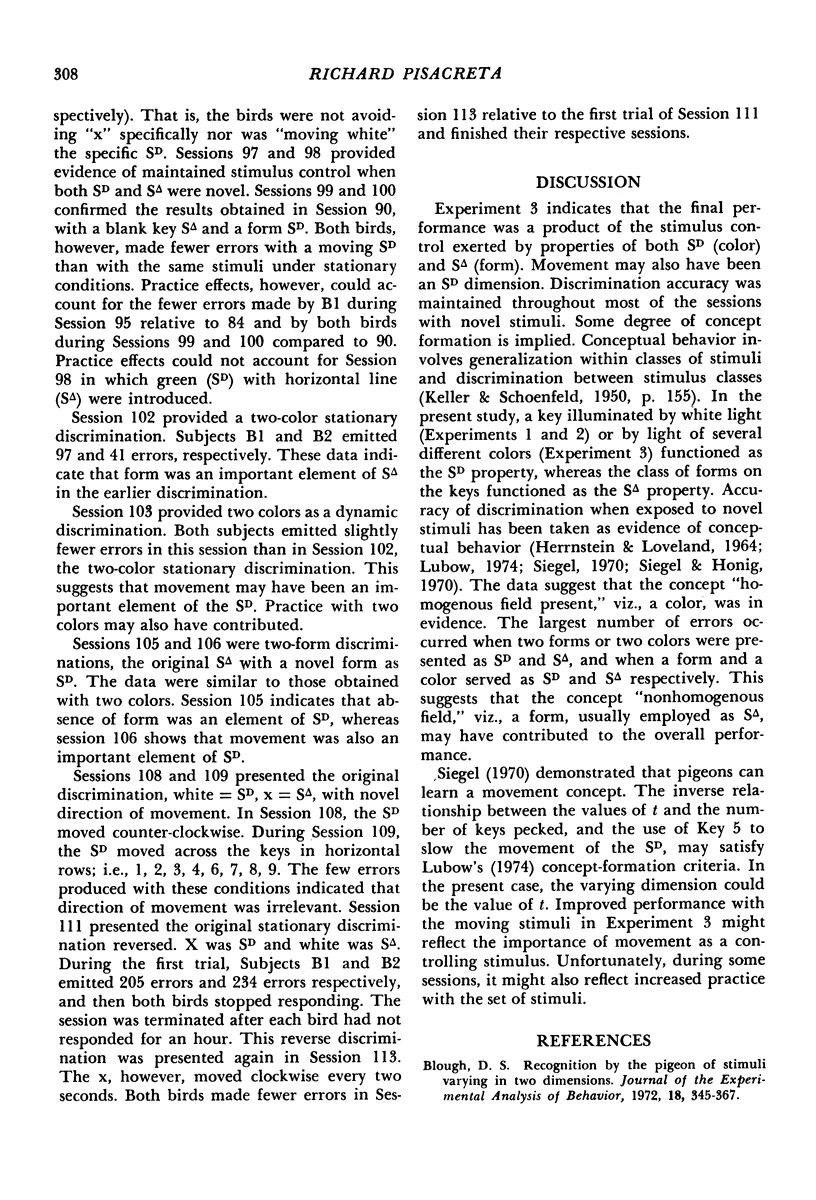
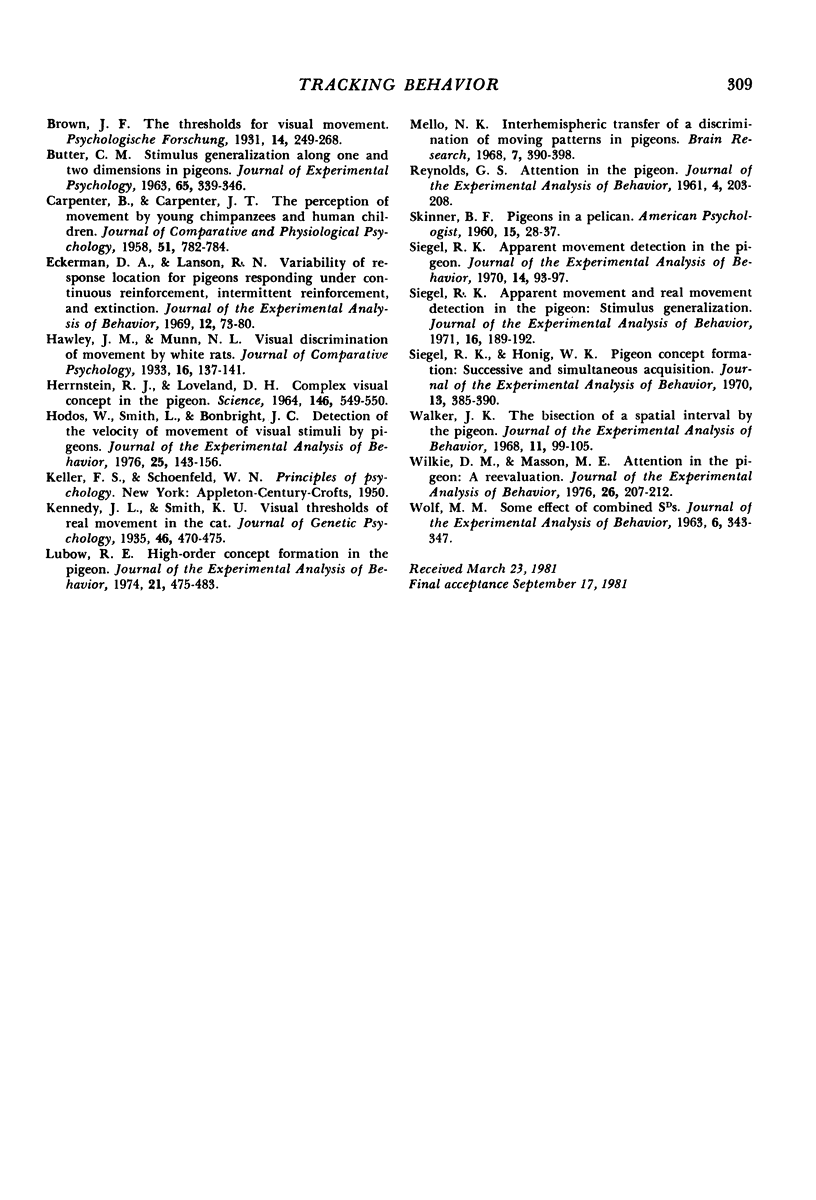
Selected References
These references are in PubMed. This may not be the complete list of references from this article.
- BUTTER C. M. Stimulus generalization along one and two dimensions in pigeons. J Exp Psychol. 1963 Apr;65:339–346. doi: 10.1037/h0040258. [DOI] [PubMed] [Google Scholar]
- Blough D. S. Recognition by the pigeon of stimuli varying in two dimensions. J Exp Anal Behav. 1972 Nov;18(3):345–367. doi: 10.1901/jeab.1972.18-345. [DOI] [PMC free article] [PubMed] [Google Scholar]
- CARPENTER B., CARPENTER J. T. The perception of movement by young chimpanzees and human children. J Comp Physiol Psychol. 1958 Dec;51(6):782–784. doi: 10.1037/h0038879. [DOI] [PubMed] [Google Scholar]
- Eckerman D. A., Lanson R. N. Variability of response location for pigeons responding under continuous reinforcement, intermittent reinforcement, and extinction. J Exp Anal Behav. 1969 Jan;12(1):73–80. doi: 10.1901/jeab.1969.12-73. [DOI] [PMC free article] [PubMed] [Google Scholar]
- HERRNSTEIN R. J., LOVELAND D. H. COMPLEX VISUAL CONCEPT IN THE PIGEON. Science. 1964 Oct 23;146(3643):549–551. doi: 10.1126/science.146.3643.549. [DOI] [PubMed] [Google Scholar]
- Hodos W., Smith L., Bonbright J. C., Jr Detection of the velocity of movement of visual stimuli by pigeons? J Exp Anal Behav. 1976 Mar;25(2):143–156. doi: 10.1901/jeab.1976.25-143. [DOI] [PMC free article] [PubMed] [Google Scholar]
- Lubow R. E. High-order concept formation in the pigeon. J Exp Anal Behav. 1974 May;21(3):475–483. doi: 10.1901/jeab.1974.21-475. [DOI] [PMC free article] [PubMed] [Google Scholar]
- Mello N. K. Interhemispheric transfer of a discrimination of moving patterns in pigeon. Brain Res. 1968 Mar;7(3):390–398. doi: 10.1016/0006-8993(68)90005-x. [DOI] [PubMed] [Google Scholar]
- REYNOLDS G. S. Attention in the pigeon. J Exp Anal Behav. 1961 Jul;4:203–208. doi: 10.1901/jeab.1961.4-203. [DOI] [PMC free article] [PubMed] [Google Scholar]
- Siegel R. K. Apparent movement and real movement detection in the pigeon: stimulus generalization. J Exp Anal Behav. 1971 Sep;16(2):189–192. doi: 10.1901/jeab.1971.16-189. [DOI] [PMC free article] [PubMed] [Google Scholar]
- Siegel R. K. Apparent movement detection in the pigeon. J Exp Anal Behav. 1970 Jul;14(1):93–97. doi: 10.1901/jeab.1970.14-93. [DOI] [PMC free article] [PubMed] [Google Scholar]
- Siegel R. K., Honig W. K. Pigeon concept formation: successive and simultaneous acquisition. J Exp Anal Behav. 1970 May;13(3):385–390. doi: 10.1901/jeab.1970.13-385. [DOI] [PMC free article] [PubMed] [Google Scholar]
- WOLF M. M. Some effects of combined S-DS. J Exp Anal Behav. 1963 Jul;6:343–347. doi: 10.1901/jeab.1963.6-343. [DOI] [PMC free article] [PubMed] [Google Scholar]
- Walker J. K. The bisection of a spatial interval by the pigeon. J Exp Anal Behav. 1968 Mar;11(2):99–105. doi: 10.1901/jeab.1968.11-99. [DOI] [PMC free article] [PubMed] [Google Scholar]
- Wilkie D. M., Masson M. E. Attention in the pigeon: a reevaluation. J Exp Anal Behav. 1976 Sep;26(2):207–212. doi: 10.1901/jeab.1976.26-207. [DOI] [PMC free article] [PubMed] [Google Scholar]


